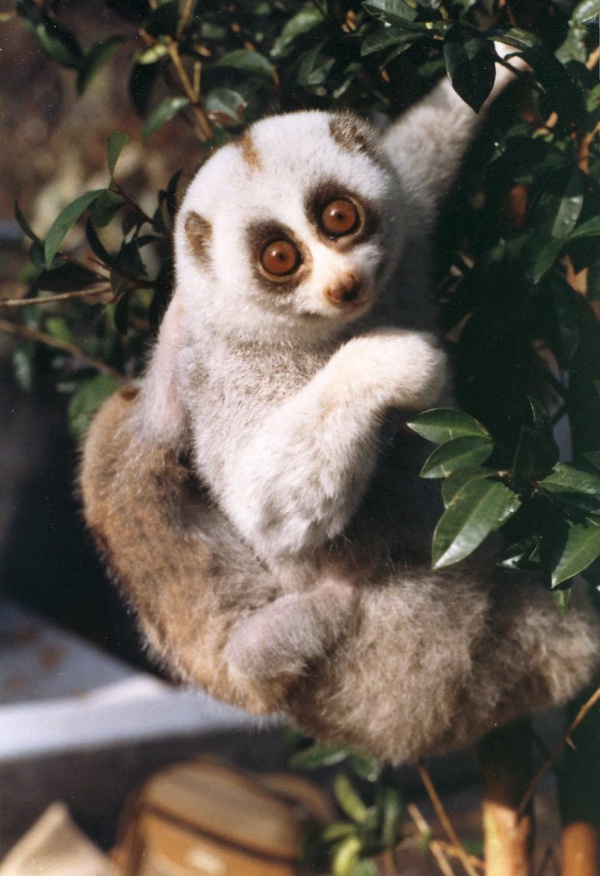Facts About Bengal slow loris
The Bengal slow loris, occasionally referred to as the northern slow loris, is an intriguing primate native to the Indian subcontinent and parts of Indochina. It is the largest species among the slow lorises, measuring 26 to 38 cm in length and weighing between 1 and 2.1 kg. These animals possess distinctive features: a wet nose, round head, large eyes, small ears, a tiny vestigial tail, and thick, woolly fur. They also secrete a specialized toxin from a gland in their arm, which they use for communication.
These nocturnal creatures thrive in the treetops of evergreen and deciduous forests, particularly rainforests with dense canopies. Not only are they adorable, but they also play a crucial role in their ecosystem by aiding in seed dispersal and pollination. Their diet is diverse, comprising fruits, insects, tree gum, snails, and even small vertebrates. Bengal slow lorises live in small family groups, mark their territory with urine, and spend their days sleeping in dense foliage or tree hollows. They typically reproduce every 12–18 months, with mothers generally giving birth to one baby at a time.
Regrettably, the Bengal slow loris is listed as endangered on the IUCN Red List. They face several significant threats, including capture for the exotic pet trade and traditional medicine, habitat loss due to deforestation, and risks from poaching and illegal logging. To aid in their survival, conservation efforts are focusing on improved protection measures, better enforcement of wildlife laws, and enhancing the connectivity between fragmented habitats. Although they reside in some protected areas, more targeted actions are essential to ensure their continued existence.
The geographic range of the Bengal slow loris extends across Northeast India, Bangladesh, and parts of Indochina. In some regions, they coexist with the pygmy slow loris and the Sunda slow loris. However, habitat destruction and population decline pose severe issues, with some local populations already extinct. Conservation efforts are paramount to safeguard the Bengal slow loris and its habitat for future generations.

 Laos
Laos